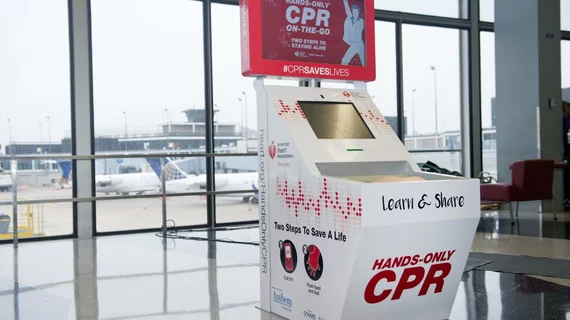Text message alert system for out-of-hospital cardiac arrests yields positive outcomes
Volunteer responders directed to automated external defibrillators (AEDs), dispatched via text message, were linked with decreased time to first defibrillation, improved bystander cardiopulmonary resuscitation (CPR), and better overall survival for out-of-hospital cardiac arrest (OHCA) patients in residencies who experienced ventricular fibrillation (VF), according to new data published in The European Heart Journal.
In the study, 785 AEDs were installed in residential areas while 5,735 responders were recruited between July 2009 and March 2013.
Data was from the AmsteRdam REsuscitation STudy (ARREST).
Seventy-nine percent of patients were men, and the mean patient age was 67 years old.
The primary outcome of the study was survival to hospital discharge for patients with VF.
The authors found that survival from OHCAs in residences rose from 26% to 39%.
Neurologically favorable survival increased from 24% to 36% in residences. The relative risk for neurologically favorable survival was 1.4.
In residences, substantially fewer patients received no CPR prior to EMS arrival with a decrease from 22% to 9% after the introduction of the text message system.
In addition, text-message responders with AED gave shocks to 16% of all patients in VF in residences, while at the same time defibrillation by EMS declined from 73% to 39% in residences.
Also, defibrillation by first responders in residences climbed from 22% to 40%.
In the analysis, the use of public AEDs in residences stayed the same at 6% and 5%.
According to the authors, time from emergency call to defibrillation declined from median 11.7 minutes to 9.3 minutes, a mean difference of -2.6.
“Our study shows that for patients with OHCA with VF who collapsed in residences, introduction of a text-message system was associated with a higher overall survival, a smaller likelihood that 23 no CPR is given before EMS arrival, and a reduced time to defibrillation,” wrote lead author, Remy Stieglis, MSc, with the department of cardiology, Amsterdam University Medical Center.
Stieglis et al. noted: “It is reasonable to assume that these process factors—at least partly— explain the increased survival in residences after introduction of the text-message system. The finding that the higher survival in residential areas was also demonstrated when all patients, including those with a non-shockable rhythm were analyzed, strengthens the importance of introducing such text messaging systems in the community.”
Read the full study here.
